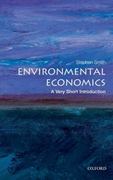Question
1. A producer owns a herd of 200 Angora goats which are sheared yearly and their fleeces are sold into the mohair industry. They are
1. A producer owns a herd of 200 Angora goats which are sheared yearly and their fleeces are sold into the mohair industry. They are looking to purchase an additional 150 or 300 goats to potentially market more fleece (goats will be shorn one year from today). Their goal is to maximize profit. In the following problem, the producer is trying to decide on three alternatives: - Keep herd size the same; - Increase the herd size by 150 goats - Increase the herd size by 300 goats, which would require a one-time cost of $10,000 to build a new barn There has been considerable fluctuations currently occurring in market price due to trade negotiations with foreign buyers. The producer feels that next year's price could fluctuate either plus or minus $3.50/lb from the present price. In order to calculate the various profit expectations use the following: Current mohair market price $7.75/lb Total cost per goat $75/head/year Expected fleece wt to sell 15 lbs/head You should complete the following:
1. Construct a payoff matrix to show the possible gross profits under the various alternatives.
2. What would the producer's decision be if he took the maximin approach?
3. What would the decision be under the maximax approach?
4. What would the decision be under the least regret rule?
5. Calculate the EMV's assuming the following probabilities:
a. Decrease in price - .50
b. No change in price - .20
c. Increase in price - .30
Step by Step Solution
There are 3 Steps involved in it
Step: 1

Get Instant Access to Expert-Tailored Solutions
See step-by-step solutions with expert insights and AI powered tools for academic success
Step: 2

Step: 3

Ace Your Homework with AI
Get the answers you need in no time with our AI-driven, step-by-step assistance
Get Started


